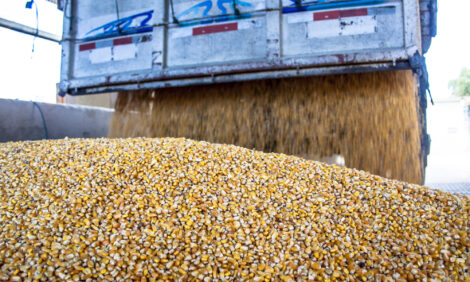



Brazil’s poultry industry surges amid rising global demand - USDA FAS
Exports soar, new markets openBrazil is poised to break records in 2025, with chicken meat production expected to rise by two percent to 15.35 million metric tons, according to a recent market report from the US Department of Agriculture's Foreign Agricultural Service (USDA FAS). That keeps the country firmly in second place globally, behind only the United States, and cements its lead as the top chicken meat exporter in the world.
The surge in output is driven by booming international demand, a weak Brazilian real, steady domestic consumption and favourable production conditions. Despite inflationary pressure and ongoing economic uncertainty, the sector has managed to stay resilient. Low feed costs, largely due to bumper corn and soybean crops, have sweetened the profitability outlook for producers.
Paraná leads the pack
The southern states continue to dominate Brazil’s poultry map. Paraná alone contributes more than a third of national chicken meat production, followed by Santa Catarina and Rio Grande do Sul. In fact, over 57% of Brazil’s poultry comes from the South. These regions benefit from a mature supply chain and advanced infrastructure, making them the engine room of the industry.
But not all is smooth sailing. Forecasts from Brazil’s meteorological agency predict higher-than-average temperatures and below-average rainfall across key poultry-producing regions. That could affect bird welfare and production efficiency, especially in summer months when heat stress and water shortages are more common.
Prices rise as producers pull back
Tightened supply during 2024 helped producers push prices higher. Between January and mid-February 2025, prices for frozen and chilled chicken jumped 12-13% compared to the same period the year before. The average price for chilled chicken in 2024 was R$7.50 per kilo, with frozen meat just behind at R$7.36.
Producers adjusted their output in 2024 to improve margins. That flexibility – enabled by the short lifecycle of chickens – gives Brazil’s poultry sector an edge in responding to market signals. While some input costs like electricity and maintenance have ticked up, stable feed prices are keeping overall production costs in check.
Sanitary vigilance keeps trade doors open
Brazil’s poultry sector remains free of Highly Pathogenic Avian Influenza (HPAI) in commercial operations. Since the virus was first detected in wild birds in 2023, no cases have been reported in industrial plants. The government and industry have ramped up biosecurity, monitoring and public awareness campaigns.
However, 2024 saw a rare outbreak of Newcastle disease in a commercial plant in Rio Grande do Sul. Quick containment measures were implemented and exports resumed shortly after, but it served as a reminder of the fragility of Brazil’s trade relationships in the face of disease risks.
To hedge against future shocks, Brazil is pushing for regionalisation clauses in health agreements. These would allow unaffected states or municipalities to keep trading even if a disease surfaces elsewhere.
Home market remains stable
Chicken is still Brazil’s protein of choice. Affordable, versatile and widely available, it makes up two-thirds of all animal protein consumed in the country. Domestic consumption is projected to rise slightly in 2025, reaching 10.1 million metric tons.
That growth comes despite inflation, job market challenges and rising food prices. Many households continue to rely on chicken as a cheaper alternative to beef, whose consumption is expected to decline this year.
Exports fuel expansion
With a five percent increase expected in 2025, Brazil is on track to export 5.2 million metric tons of chicken meat – not counting paws. The government is expanding its reach, having opened 25 new markets in 2025 alone, including four directly tied to poultry. In 2024, Brazil added 23 poultry-related markets to its global roster.
China remains a top buyer, although exports dipped in 2024 due to restrictions following a Newcastle disease case. Japan, the UAE, Saudi Arabia and South Africa round out the top five, collectively taking in nearly half of Brazil’s poultry exports.
Halal markets are a particular focus, with growing demand in the Middle East. Brazil is also deepening its foothold in Asia, with Singapore and Chile emerging as strong buyers.
Looking ahead
With record production, expanding markets and steady domestic demand, Brazil’s poultry industry is flying high. As long as it maintains its sanitary status and keeps costs under control, the country will remain a global heavyweight in chicken meat exports.









